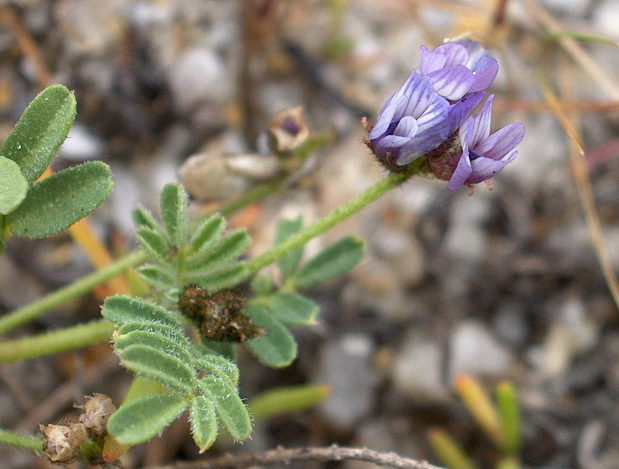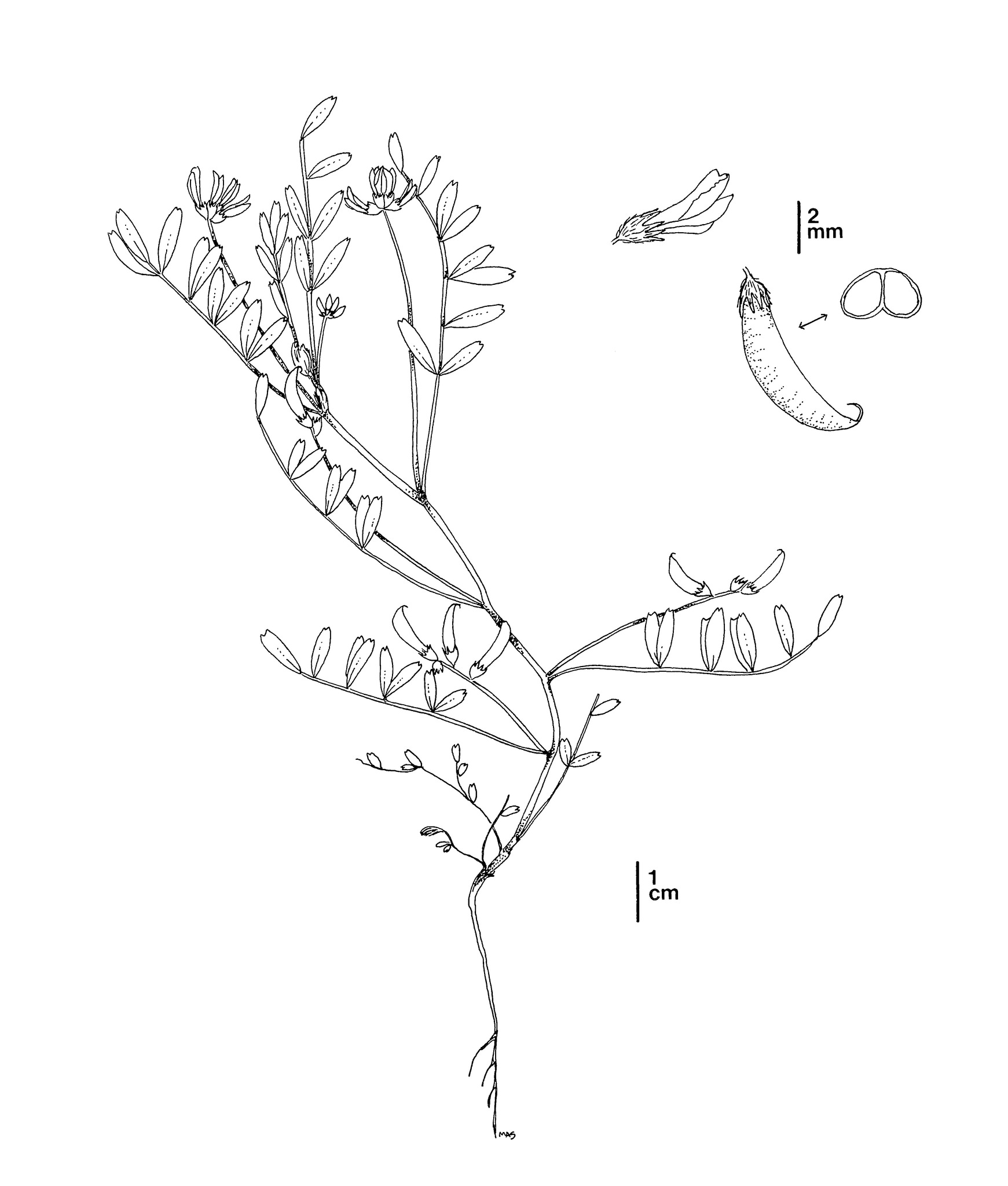Astragalus tener var. titi
 Astragalus tener var. titi. Photo © Bob Huettmann
Astragalus tener var. titi. Photo © Bob Huettmann
 Astragalus tener var. titi. CDFW illustration by Mary Ann Showers. (Click to enlarge)
Astragalus tener var. titi. CDFW illustration by Mary Ann Showers. (Click to enlarge)
Coastal dunes milk-vetch was listed in 1982 as a California endangered plant species, which means that killing or possessing this plant is prohibited by the California Endangered Species Act (CESA). Coastal dunes milk-vetch is also listed as endangered under the federal Endangered Species Act. Coastal dunes milk-vetch is an annual herb in the pea family (Fabaceae) and only occurs in California. Its habitat consists of coastal dunes, bluffs, and coastal terrace grassland. Coastal dunes milk-vetch has small purple flowers clustered at the end of slender stems. It blooms during the months of March through June. Historically, coastal dunes milk-vetch occurred in northern and southern California, including San Diego County, Los Angeles County, and Monterey County; however, there has not been a sighting or collection in San Diego County or Los Angeles County in over 50 years. The only recently observed population is located on private land along 17-Mile Drive in Pebble Beach on the Monterey Peninsula.
In January 2009, the U.S. Fish and Wildlife Service published a 5-Year review (PDF) with updated information on coastal dunes milk-vetch status and threats. Coastal dunes milk-vetch is threatened by urbanization, recreational activities, and non-native plants. It was included in a list of six rare plants endemic to California’s central coast that were identified by the California Department of Fish and Wildlife for development of recovery recommendations; in response, Recovery Strategies for Six Coastal Plant Species on the Monterey Peninsula (PDF) was prepared in 1996. Population size varies with amount of annual rainfall year to year; however, there has been little change in average population size since it was federally listed in 1998. Where the population presently persists on the Monterey Peninsula, landowners are taking measures to protect and manage coastal dunes milk-vetch. Their strategies include an exclosure to protect the plants from grazers and people, removal of nonnative species, and installation of sensitive species signs along the road. These protective measures are helping to preserve its habitat; however, coastal dunes milk-vetch continues to be threatened by recreational activities.
Unfortunately, there is little habitat suitable for population expansion, and the existence of only one population leaves coastal dunes milk-vetch at risk of going extinct. Alternative or historically suitable habitat for coastal dunes milk-vetch reintroduction efforts should be investigated. Possible reintroduction locations include the Monterey Peninsula, Point Lobos State Reserve, and the areas in San Diego County and Los Angeles County where coastal dunes milk-vetch was historically present.
CDFW has participated in the following San Diego mesa mint studies and projects:
CDFW may issue permits for coastal dunes milk-vetch pursuant to CESA, and you can learn more about California laws protecting coastal dunes milk-vetch and other California native plants. Populations of coastal dunes milk-vetch occur in CDFW’s Central Region. More information is also available from the U.S. Fish and Wildlife Service Species Profile for coastal dunes milk-vetch.
Updated 2/3/2017